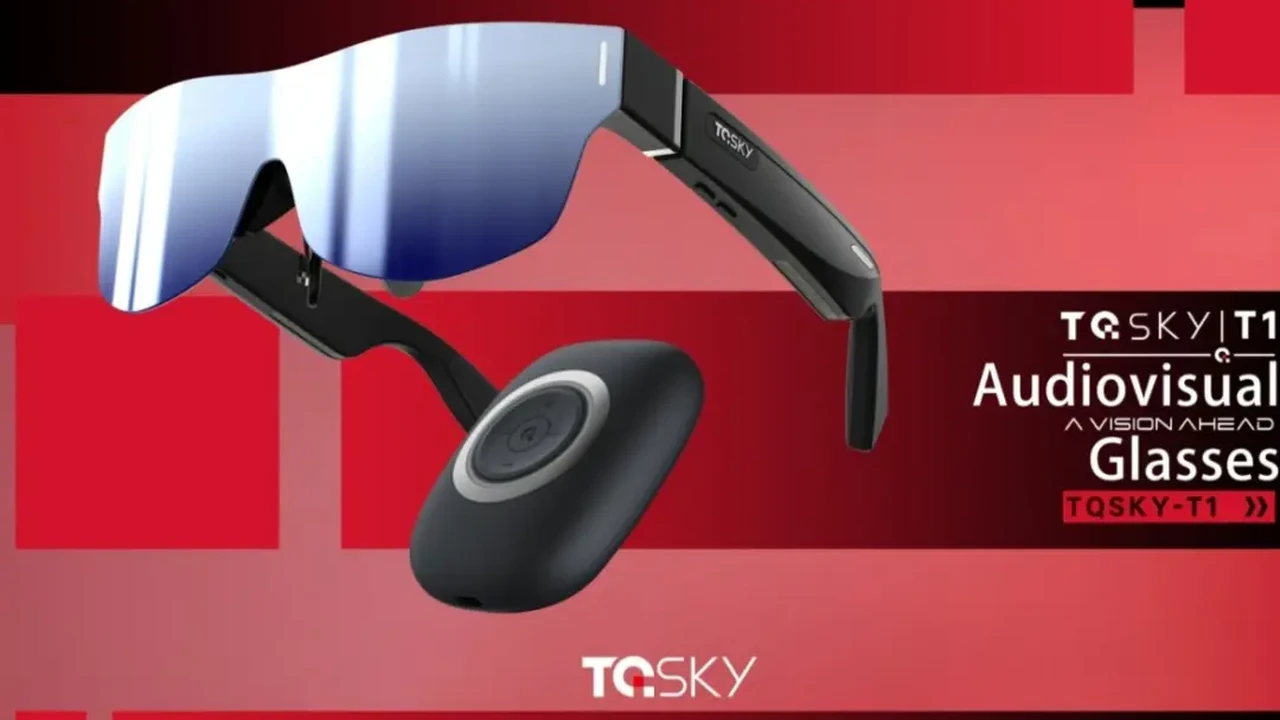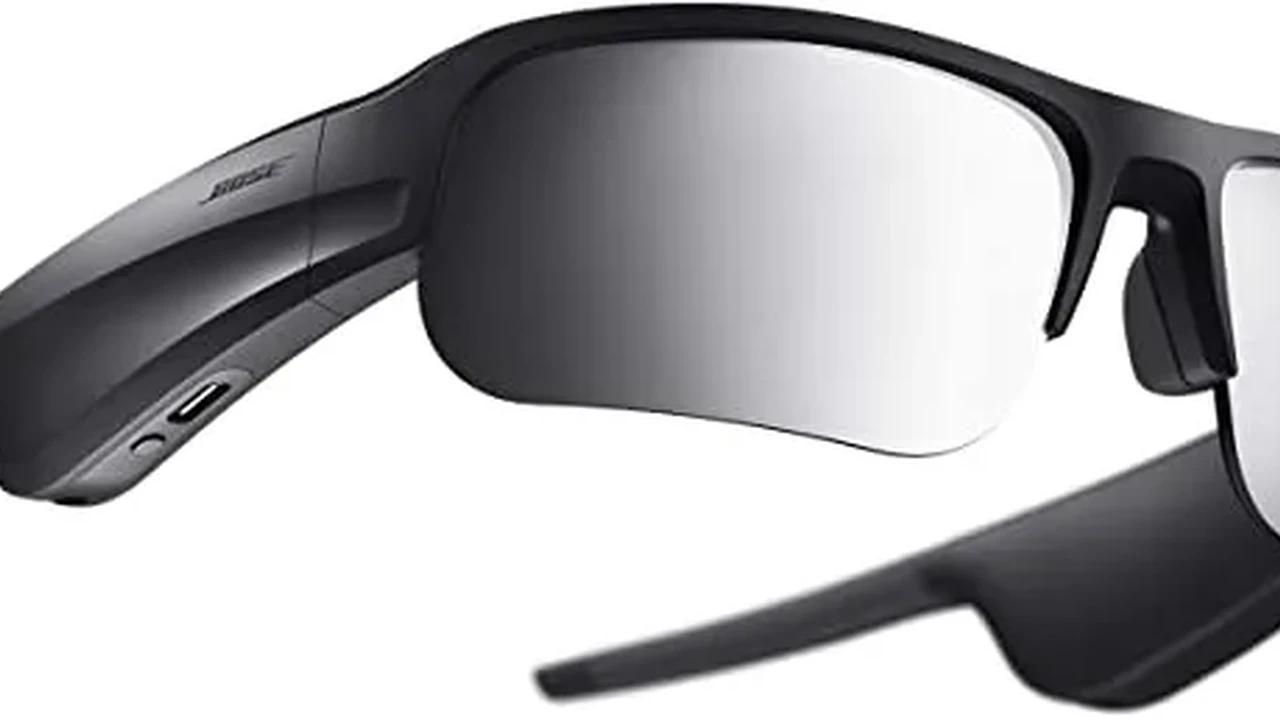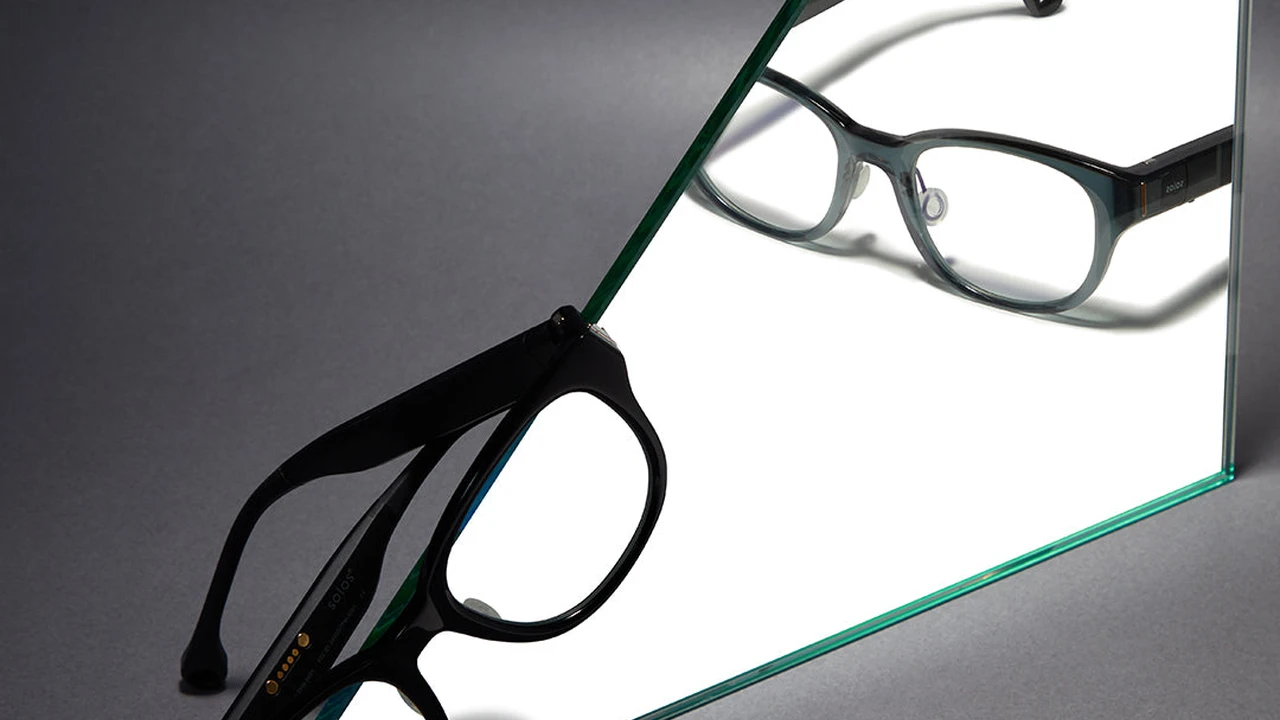Key Technologies Powering Modern Smart Glasses
Explore the core technologies that make modern smart glasses possible, including displays, sensors, and AI.

Key Technologies Powering Modern Smart Glasses
Smart glasses are no longer just a futuristic concept; they're a rapidly evolving reality, blending digital information with our physical world. But what exactly makes these sophisticated devices tick? It's a fascinating combination of cutting-edge technologies working in harmony. Understanding these core components is key to appreciating the innovation behind smart glasses and what they can truly achieve.
Smart Glasses Displays The Window to Augmented Reality
The display is arguably the most critical component of any smart glasses. It's how digital information is projected into your field of view, seamlessly overlaying it onto the real world. There are several primary display technologies currently in use, each with its own strengths and weaknesses:
Waveguide Displays The Transparent View
Waveguide displays are a popular choice for their ability to create a transparent, unobtrusive viewing experience. They work by guiding light from a tiny projector through a thin piece of glass or plastic (the waveguide) directly into the wearer's eye. This allows for a wide field of view without obstructing the real world. Companies like Microsoft (with HoloLens) and Magic Leap heavily utilize waveguide technology. For instance, the Microsoft HoloLens 2 uses a LCOS (Liquid Crystal on Silicon) microdisplay coupled with a waveguide, offering a bright and clear image. These are ideal for industrial applications where workers need to see their environment clearly while receiving digital instructions or data. The cost for such advanced waveguide systems can be significant, often ranging from $3,500 to $5,000+ for enterprise-grade devices.
Birdbath Optics Immersive and Compact
Birdbath optics, often seen in devices like the Nreal Air, use a semi-transparent mirror to reflect an image from a micro-OLED or micro-LED display into the wearer's eye. This creates a larger, more immersive virtual image, often perceived as being several feet in front of the user. While they can offer a wider field of view and vibrant colors, they might be slightly less transparent than waveguides, sometimes creating a subtle 'sunglasses' effect. Nreal Air, for example, uses dual micro-OLED displays, delivering a sharp 1920x1080 resolution per eye. These are often found in consumer-oriented smart glasses designed for media consumption and light productivity, with prices typically ranging from $400 to $700.
Retinal Projection Direct to Your Eye
Retinal projection technology, while less common in commercially available smart glasses today, aims to project images directly onto the wearer's retina. This can potentially offer incredibly sharp images and eliminate the need for traditional lenses, making the glasses lighter and more compact. However, the technology is complex and still faces challenges in terms of brightness, color accuracy, and eye safety. Companies like Mojo Vision were exploring this with their smart contact lens, though that project has shifted focus. If it becomes mainstream, it could revolutionize the form factor of smart glasses.
Smart Glasses Sensors Understanding the World Around You
Beyond the display, smart glasses rely on a sophisticated array of sensors to understand their environment, track user movements, and enable interactive experiences. These sensors are the 'eyes and ears' of the smart glasses, gathering data that the onboard processor then interprets.
Cameras Capturing the Visual World
Most smart glasses feature multiple cameras. These can include RGB cameras for capturing photos and videos (like the Ray-Ban Stories), depth cameras (like those in HoloLens 2) for 3D mapping of the environment, and infrared cameras for eye tracking or low-light conditions. For example, the HoloLens 2 uses multiple cameras for spatial mapping, allowing it to understand the geometry of a room and place virtual objects realistically within it. Ray-Ban Stories, on the other hand, focuses on capturing first-person photos and videos, making them ideal for content creators or simply documenting daily life. The price point for camera-focused smart glasses like Ray-Ban Stories is around $300.
IMUs Inertial Measurement Units for Motion Tracking
IMUs, which typically combine accelerometers, gyroscopes, and magnetometers, are crucial for tracking the wearer's head movements and orientation. This data is essential for stabilizing the virtual image, ensuring that digital content remains fixed in space even as the user moves their head. Without IMUs, the virtual world would feel disorienting and unstable. Every pair of smart glasses, from the most basic audio glasses to advanced AR headsets, will incorporate an IMU. This technology is relatively mature and cost-effective, contributing minimally to the overall price but massively to the user experience.
Microphones and Speakers Voice Interaction and Audio
Microphones enable voice commands, allowing users to interact with the smart glasses hands-free. They also facilitate communication, whether it's taking calls or participating in virtual meetings. Integrated speakers, often bone-conduction or open-ear designs, deliver audio without blocking ambient sounds, maintaining situational awareness. Amazon Echo Frames, for instance, excel in this area, integrating Alexa voice assistant and open-ear audio for discreet listening and communication. These are priced around $270. The quality of microphones and speakers can vary significantly, impacting the clarity of calls and the richness of audio playback.
Eye Tracking and Gaze Detection Intuitive Interaction
Advanced smart glasses often incorporate eye-tracking technology. This allows the device to know where the user is looking, enabling intuitive interactions like gaze-based selection or foveated rendering (where only the area the user is looking at is rendered in high resolution, saving processing power). This is particularly useful in enterprise applications for training or remote assistance, where precise interaction is needed. The HoloLens 2 is a prime example, using eye tracking for precise interaction with holograms. This feature adds to the complexity and cost, typically found in higher-end devices.
Smart Glasses Processors The Brains of the Operation
Just like a smartphone or computer, smart glasses need a powerful processor to handle all the data coming from the sensors, render graphics for the display, and run applications. These are often specialized System-on-Chips (SoCs) designed for low power consumption and high performance.
Mobile Processors Optimized for Wearables
Many smart glasses utilize mobile processors, similar to those found in smartphones, but often optimized for the unique demands of wearable technology. These chips need to be energy-efficient to maximize battery life while still providing enough computational power for real-time AR experiences. Qualcomm's Snapdragon XR platforms are a common choice, specifically designed for extended reality (XR) devices, encompassing VR, AR, and MR. For example, the Vuzix Blade Upgraded uses a Qualcomm Snapdragon 835 processor, enabling it to run Android applications and process visual data efficiently. The cost of the processor is integrated into the overall device price, but a more powerful chip generally means a higher price tag, with devices like the Vuzix Blade costing around $1,000.
Dedicated AI Accelerators Enhancing Intelligence
As smart glasses become more intelligent, dedicated AI accelerators are becoming increasingly important. These specialized hardware components are designed to efficiently process AI algorithms, enabling features like real-time object recognition, natural language processing for voice commands, and contextual awareness. This allows the smart glasses to understand not just what you're looking at, but also the context of your environment and your intentions. While not always explicitly marketed, these accelerators are often integrated into the main SoC. This technology is crucial for the future of truly intelligent smart glasses that can anticipate user needs.
Smart Glasses Connectivity Staying Connected
For smart glasses to be truly useful, they need to connect to the outside world, whether it's for accessing cloud services, receiving notifications, or communicating with other devices.
Bluetooth Wireless Communication
Bluetooth is a fundamental connectivity option for almost all smart glasses. It allows them to pair with smartphones for data transfer, notifications, and audio streaming. This is how many audio-focused smart glasses, like the Bose Frames or Amazon Echo Frames, connect to your phone to play music or take calls. Bluetooth's low power consumption makes it ideal for continuous connection without draining the battery too quickly. These types of smart glasses are generally more affordable, ranging from $150 to $300.
Wi-Fi High-Speed Data
Wi-Fi connectivity is essential for smart glasses that require high-speed data transfer, such as streaming video, downloading large applications, or accessing cloud-based AR experiences. Enterprise-grade smart glasses, like the Google Glass Enterprise Edition 2, often feature Wi-Fi to connect to corporate networks and access specialized applications. This allows for robust data exchange in industrial or medical settings. Google Glass Enterprise Edition 2, for example, is priced for enterprise use, typically around $1,000.
Cellular 5G and Beyond Always On
The integration of cellular connectivity, particularly 5G, is a significant trend for future smart glasses. 5G offers ultra-low latency and high bandwidth, enabling truly untethered AR experiences that rely heavily on cloud processing. Imagine smart glasses that can access vast amounts of data or render complex holograms in real-time from the cloud, without needing to be connected to a phone or Wi-Fi. While not yet widespread, this will be a game-changer for truly standalone smart glasses. Devices with integrated cellular capabilities will likely be at the higher end of the price spectrum.
Smart Glasses Power Management Keeping the Lights On
Battery life is a constant challenge for smart glasses, given their compact size and the power demands of their components. Innovations in battery technology and power management are crucial for extended use.
Compact Batteries High Energy Density
Smart glasses rely on compact, high-energy-density lithium-ion batteries. Manufacturers are constantly working to improve battery capacity without increasing size or weight. The placement of these batteries is also critical for balance and comfort. For example, some smart glasses distribute the battery weight across the temples to ensure a comfortable fit. The battery life varies widely, from a few hours for intensive AR use to a full day for audio-focused glasses.
Efficient Power Management Software and Hardware
Beyond the battery itself, efficient power management software and hardware are vital. This includes optimizing the operating system, intelligently managing sensor usage, and employing low-power display modes. Features like foveated rendering, mentioned earlier, also contribute to power efficiency by reducing the computational load. These optimizations are often invisible to the user but are critical for a practical daily experience.
Smart Glasses Software and Operating Systems The User Experience
The hardware is only as good as the software that runs on it. Smart glasses require specialized operating systems and application ecosystems to deliver a seamless user experience.
Android Based OS Flexibility and Familiarity
Many smart glasses, especially those with more computational power, run on customized versions of Android. This provides a familiar development environment for app developers and allows for a wide range of applications. Google Glass Enterprise Edition 2 and Vuzix Blade are examples of devices running Android-based operating systems, allowing for custom app development for specific enterprise needs. This flexibility is a major advantage for businesses looking to integrate smart glasses into their workflows.
Proprietary Operating Systems Optimized Performance
Some manufacturers develop their own proprietary operating systems to achieve highly optimized performance and tight integration between hardware and software. This can lead to a smoother, more responsive user experience, but it might limit the availability of third-party applications. Magic Leap's Lumin OS is an example of a proprietary system designed specifically for their mixed reality platform. While potentially offering a superior experience, it can also mean a smaller app ecosystem initially.
Application Ecosystem and Developer Tools Expanding Capabilities
A robust application ecosystem and accessible developer tools are crucial for the long-term success of any smart glasses platform. Developers need the resources to create compelling applications that leverage the unique capabilities of smart glasses, from AR games to industrial training simulations. The more developers embrace a platform, the more useful and versatile the smart glasses become.
The Future of Smart Glasses Integration and Miniaturization
The trend in smart glasses technology is clear: greater integration, increased miniaturization, and enhanced intelligence. We can expect to see:
- More powerful, yet smaller, processors: Enabling more complex AR experiences in a lighter form factor.
- Improved display technologies: Offering wider fields of view, higher resolutions, and even greater transparency.
- Advanced sensor fusion: Combining data from multiple sensors for an even more accurate understanding of the environment and user intent.
- Longer battery life: Through continued advancements in battery chemistry and power management.
- Seamless integration with AI: Making smart glasses truly intelligent assistants that can anticipate needs and provide contextual information.
- Mainstream adoption: As the technology matures and prices become more accessible, smart glasses will likely become as common as smartphones are today.
Understanding these core technologies provides a solid foundation for appreciating the current capabilities and future potential of smart glasses. They are not just gadgets; they are complex systems designed to augment our reality and change the way we interact with information and the world around us.
:max_bytes(150000):strip_icc()/277019-baked-pork-chops-with-cream-of-mushroom-soup-DDMFS-beauty-4x3-BG-7505-5762b731cf30447d9cbbbbbf387beafa.jpg)






